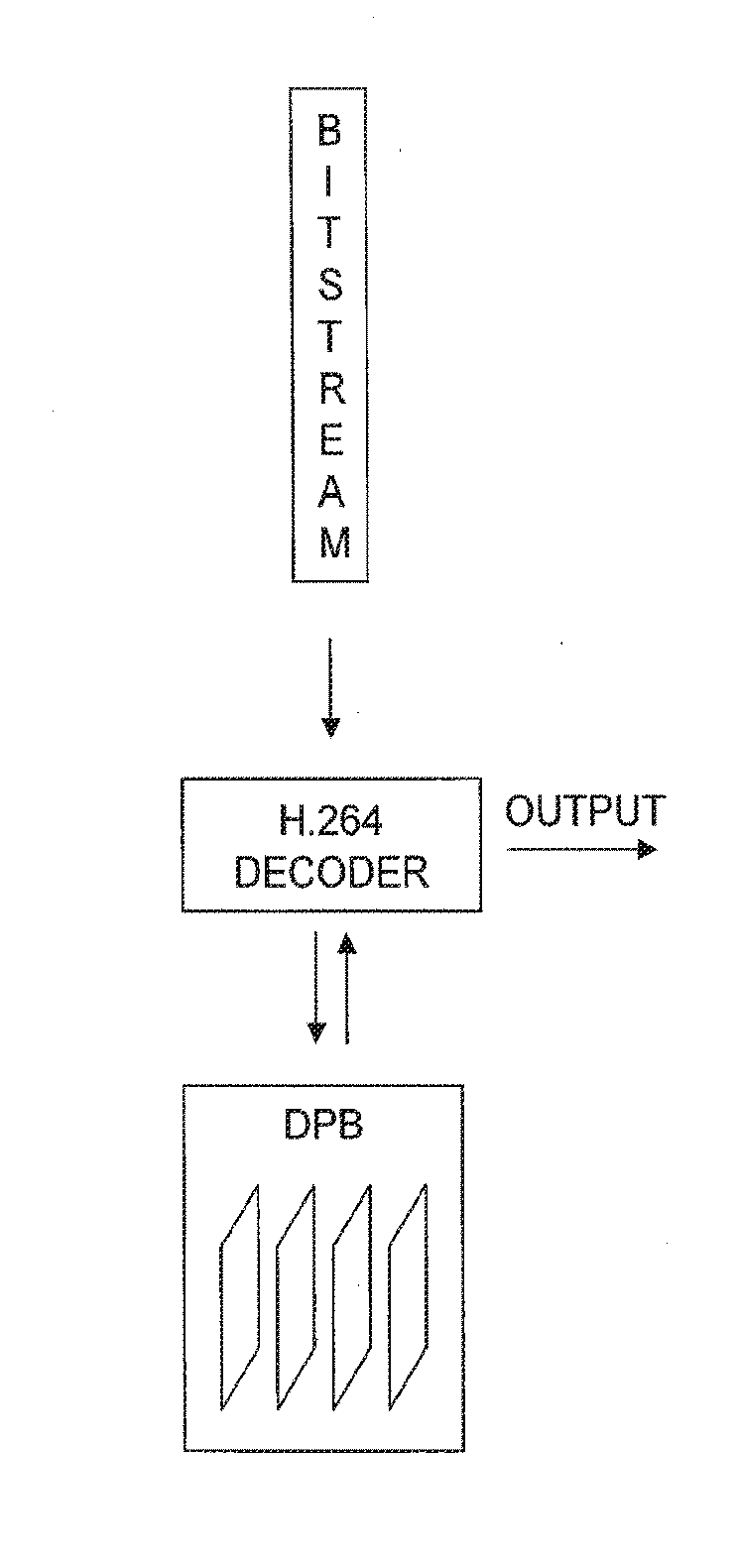Decoding and encoding of pictures of a video sequence
a video sequence and picture technology, applied in the field of decoding and encoding pictures of video sequences, can solve the problems of limiting the size of the dpb in h.264/avc, the decoding machine cannot have any freedom regarding the output order, and the decoding machine cannot have any freedom of output order. , to achieve the effect of improving the decoding and encoding of pictures
- Summary
- Abstract
- Description
- Claims
- Application Information
AI Technical Summary
Benefits of technology
Problems solved by technology
Method used
Image
Examples
example embodiment 1
[0159]In one embodiment, an additional picture output process step is added after picture decoding in order to allow earlier output of pictures, see FIG. 14.
[0160]A decoder method may contain and / or a decoder may be configured to perform the following ordered steps according to the embodiment:[0161]1. The slice header of the first slice header of picture P is parsed.[0162]2. A picture marking process is done.[0163]3. A picture output process is done in which pictures may be output.[0164]4. Picture P is decoded.[0165]5. After picture P is decoded, the decoder determines the number of pictures in the DPB that are marked “needed for output” and compares that number against a value that is derived from syntax elements (exemplified by embodiment 9) in the bitstream.[0166]6. If the number of pictures in the DPB marked “needed for output” is greater than the value that is derived from syntax elements in the bitstream, the picture of the pictures in the DPB marked “needed for output” which ...
example embodiment 2
[0168]The same as example embodiment 1 where the value is represented by a single codeword of the syntax element in the bitstream.
example embodiment 3
[0169]The same as example embodiment 2 where the value is represented by a codeword in a sequence parameter set, e.g. a picture parameter set (PPS), a sequence parameter set (SPS) or a video parameter set (VPS).
PUM
 Login to View More
Login to View More Abstract
Description
Claims
Application Information
 Login to View More
Login to View More - R&D
- Intellectual Property
- Life Sciences
- Materials
- Tech Scout
- Unparalleled Data Quality
- Higher Quality Content
- 60% Fewer Hallucinations
Browse by: Latest US Patents, China's latest patents, Technical Efficacy Thesaurus, Application Domain, Technology Topic, Popular Technical Reports.
© 2025 PatSnap. All rights reserved.Legal|Privacy policy|Modern Slavery Act Transparency Statement|Sitemap|About US| Contact US: help@patsnap.com



